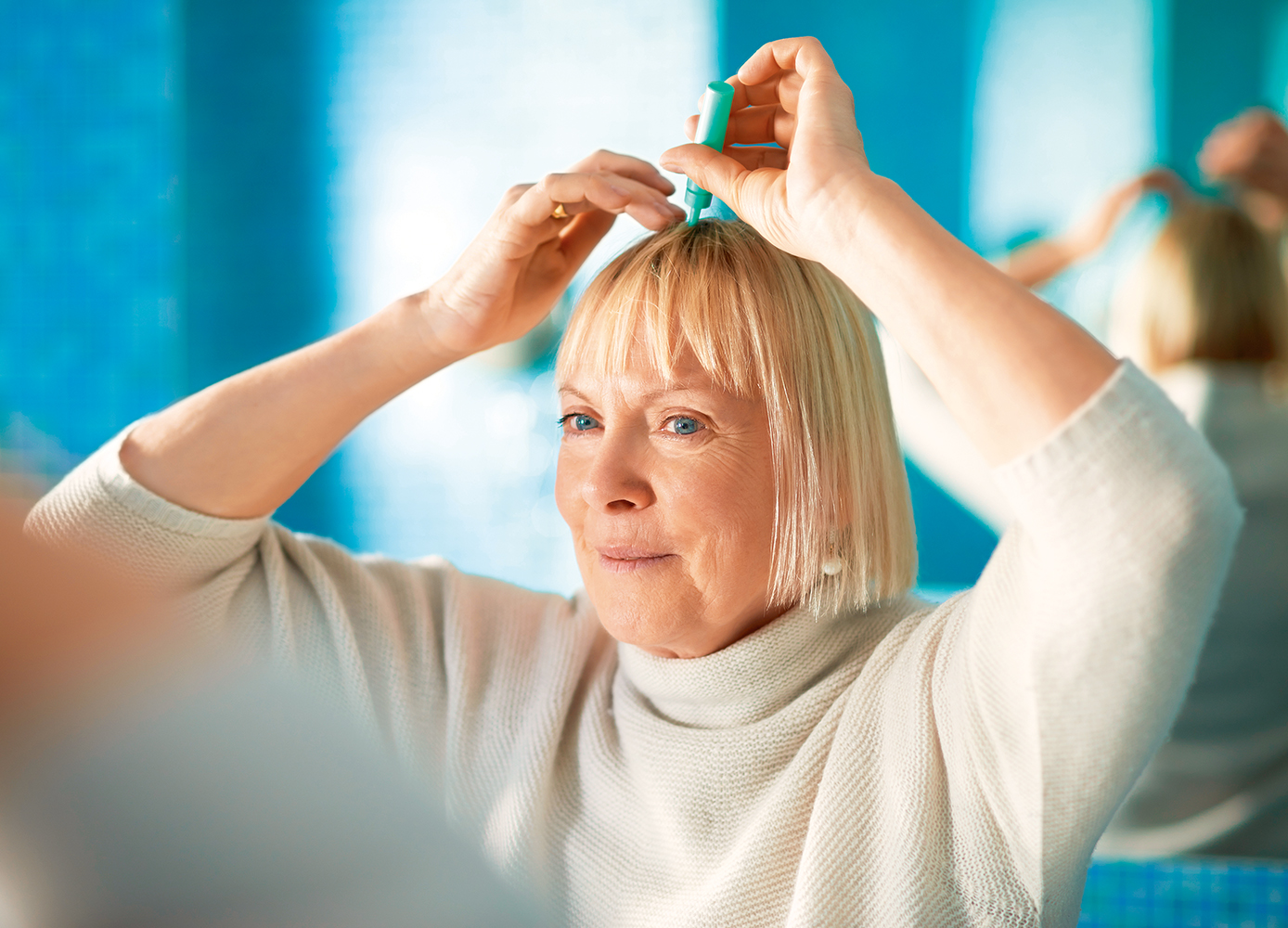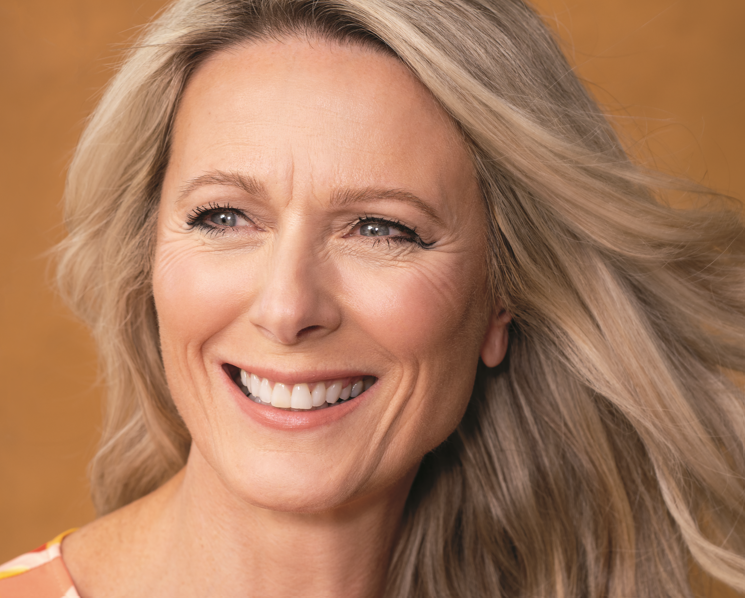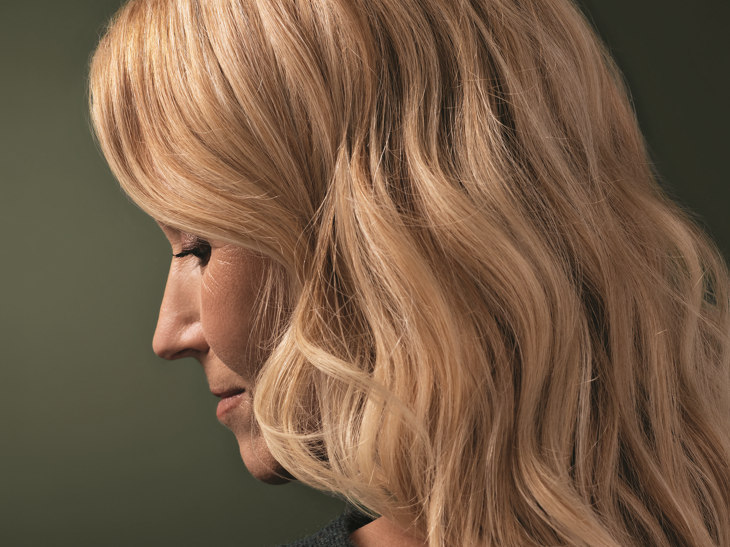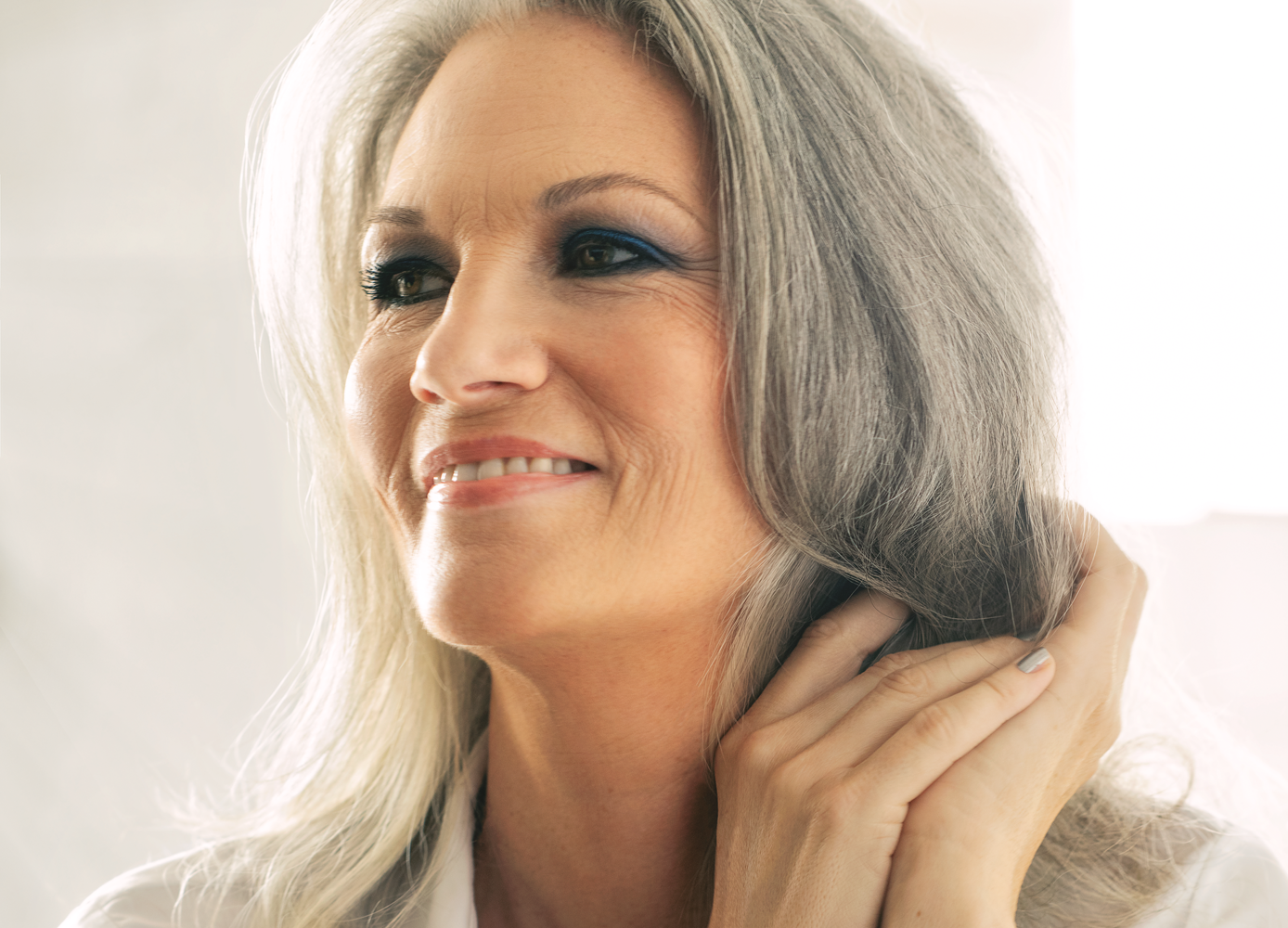It happens—but there are fixes
By Lola Augustine Brown
Thinning hair may be a natural part of getting older, but it can be pretty distressing when it starts to happen, especially when it happens quickly as a result of illness, medication, or other factors. The good news is that a number of treatment options are available to help you thicken and regain your hair.
“To suggest the right treatment, we have to discover the cause, and because many hair-loss issues look identical, a proper examination of the scalp and blood tests are important,” says Dr. Jeff Donovan, a dermatologist and the owner of Donovan Hair Clinic in Whistler, BC. You may find that your hair loss has been accelerated by an autoimmune disease or thyroid condition, Donovan says, so there’s no point in pouring money into hair-loss treatments if you don’t address the underlying problem first.
When should you seek medical treatment for hair loss? “The sooner one can see an expert about hair loss, the better,” Donovan says, as that way, you can try to keep the hair you have instead of working on getting it back. (With a doctor’s referral, dermatology visits may well be covered by your health insurance.)
That Darned Genetic Lottery
The most common reason for thinning hair in both women and men is genetics. Donovan says that genetic baldness may start later in women, but once menopause kicks in and changes hormone balances, hair loss can become more apparent.
“What’s different between men and women is that male-pattern baldness occurs in specific areas, while in women, it may present as a thinning all over, meaning that different treatments may be required,” Donovan says. Hair transplants, for example, aren’t always recommended for women. “With a hair transplant, you take hair from where it is thicker and transplant the hair follicle to the area where it is thinning, but if your hair is thin all over, that just won’t give the desired effect.”
Treatments and Solutions
One of the most commonly recommended and well-known treatments for thinning hair is minoxidil (often sold as Rogaine). “After 30 years of use, this still remains a very important mainstay of treatment for many patients,” Donovan says. Rogaine is available in pharmacies mostly everywhere, with a bottle that lasts a month costing around $60.
Rogaine is marketed as a treatment for hereditary (genetic) hair loss. In hereditary hair loss, as we get older, the hair follicle shrinks and goes from an active-growth phase to a resting phase, eventually getting to a point where there’s no growth at all.
“The active ingredient in Rogaine, minoxidil, reverses the miniaturization of the hair follicles, revitalizing them and shifting them from a resting to an active-growth phase,” explains Menas Kizoulis, the director of scientific engagement for Johnson & Johnson Consumer Health. “More follicles in the growth phase at the same time can result in thicker, fuller-looking hair.”
If you’ve tried Rogaine in the past and thought it didn’t work, it might be that you didn’t give it enough time. “In the first two or three months, Rogaine causes shedding, and that’s enough to make people put it back on the shelf and think it doesn’t work,” Donovan says. “After two months of using Rogaine, though, you may see some results.”
Helen Racinelli, who lives in Toronto, lost her hair after chemotherapy, and although Rogaine isn’t often suggested for use after chemotherapy, Racinelli says that it has definitely helped her. “Rogaine is often the first-line treatment that specialists recommend to women, whatever the reason for their hair loss, and because it is an over-the-counter product, it’s an easy thing to try,” she says.
Depending on how much your hair loss bothers you and how much you are willing to invest in having fuller hair, various treatment options are available.
“We have anti-androgen tablets, we have laser treatments, we have a treatment called ‘platelet-rich plasma’—where a patient’s blood is injected into his or her scalp—and then we have hair-transplant surgery, which can be a very good option for many patients,” Donovan says. It’s worth noting that the results of hair-transplant surgery look very natural these days, with none of the “plug” look that transplants of old were known for.
When researching hair loss, you may read advice such as “Have cool showers only,” “Don’t use tight hair elastics,” and “Style your hair in this way or that,” but Donovan says that while such measures affect how healthy your hair looks, none of them will substantially contribute to hair loss. “That’s happening deep in the hair follicle, not on the outside,” he says. “However, those things may make your hair more fragile and susceptible to breakage.”
For most people, worrying about diet is similarly unhelpful, Donovan says. “Most people are eating a diet varied enough that they’re getting the vitamins and minerals they need, but if they aren’t, I’d be more interested in finding out whether an underlying condition is causing a deficiency,” he says.
Gaining Confidence With Thinning Hair
Even without expensive treatments, there’s a lot that you can do to make the best of the hair you have. For a start, a good stylist will be able to give you a haircut that flatters, using techniques to make your hair look fuller. Moreover, countless brands offer thickening hair products—from shampoos to styling mousses—most of which are on the shelves of your local drugstore. There are also fibre sprays that add immediate density to thinning areas. Also known as “hair camouflage,” fibre sprays are made of keratin—the same protein hair consists of; the fibres adhere to your hair, creating a fuller look.
Two years ago, Racinelli started a now-popular YouTube channel (youtube.com/c/ShrimpyMcGee) offering advice and reviews of products that help women look and feel their best with thinning hair. Racinelli has tried pretty much everything, from Rogaine and other regrowth products to hairpieces and wigs, and shares everything she’s learned with followers from around the world. If you’re wondering whether to try a product, click on her channel, because she’s probably covered it. “Everyone’s hair and scalp is different, so which products you’re going to like best can be quite an individual thing,” she says.
“I’m not so much into the thickening products, as I find them drying, but I do sometimes use hair fibres to cover up sparser patches. You shake them on and you see less shiny scalp,” Racinelli says.
One of the things about which Racinelli gets the most questions—and says that women are often happiest with—is alternative hair such as hair toppers (essentially semiwigs also known as “top pieces” or “hair enhancers”). “They look so good and offer such a quick fix,” Racinelli says. You’ll find many online stores selling hairpieces or full wigs, but you can also do a Google search for a store near you where you can try pieces on and get exact matches to your natural colour.
Forget any stigma or concern about going down this route. “Many women wonder why they waited so long to try alternative hair and love how it makes them look and feel,” Racinelli says.
Photo: iStock/diego_cervo.






